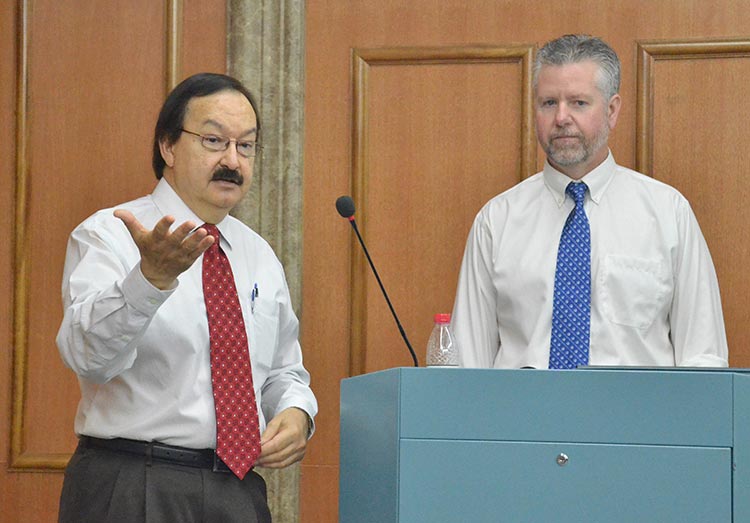UTEP Chemistry Professor Featured in Renowned Scientific Journal
Last Updated on August 14, 2018 at 12:00 AM
Originally published August 14, 2018
By UC Staff
UTEP Communications
The work of a University of Texas at El Paso professor has been published in one of the world’s leading monthly peer-reviewed scientific journals.

Two articles focusing on nanotechnology’s impact on drinking water and agriculture co-written by Jorge Gardea-Torresdey, Ph.D., the Dudley Professor of Chemistry and Environmental Science and Engineering, were published in the August 2018 edition of Nature Nanotechnology.
The journal, published by Nature Publishing Group, covers all aspects of nanoscience and nanotechnology.
“This is a momentous occasion in my professional career,” Gardea-Torresdey said. “We have published more than 450 research articles. These are the only two that have appeared in Nature Nanotechnology, and they are in the same issue. It is remarkable that the editor addresses our work in his commentary. This has never happened for me, it is amazing. This a great day for all of us. It is another example of UTEP’s academic and research strengths.”
The first work that appears in the journal, “Achieving food security through the very small,” discusses nanotechnology’s potential role in increasing efficiency and sustainability of agriculture.
Gardea-Torresdey co-wrote the article with Jason C. White, Ph.D., vice director of the Connecticut Agricultural Experiment Station. Gardea-Torresdey’s work on the uses and potential effects of nanoparticles in agriculture has been funded by the National Science Foundation’s (NSF) University of California Center for the Environmental Implications of Nanotechnology (UC CEIN) as a 10-year, $48 million grant.
The article was lauded in the journal’s editorial section. Of Gardea-Torresdey and White’s research, the journal stated, “The importance of such studies … is that in their absence it remains unclear whether the improvements observed in a new agrochemical formulation are indeed related to the inclusion of nanoparticles. It is true that broadly speaking the small size and high surface-area-to-volume ratio in nanoparticles can be beneficial. But using this justification without properly understanding the mechanisms of interaction between nanoparticles and crops, hence leading to the tailored design of new nanoagrochemicals, may in the long run undermine the potential of nanotechnology in agriculture, as has perhaps already happened in other fields.”
The second piece in the journal is a thorough-review article, “Low risk posed by engineered and incidental nanoparticles in drinking water.” It assesses the health risks associated with natural and engineered nanoparticles present in tap water.
Gardea-Torresdey collaborated with a number of other field experts on the article, which was funded through a five-year grant from the NSF’s Engineering Research Center (ERC) Nanotechnology Enabled Water Treatment Systems (NEWT).